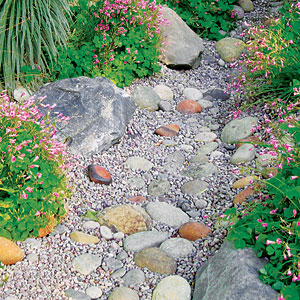How to Landscape in Dry Climates

Landscapes in dry climates, also known as Xeriscapes that require little or no water supplement to sustain life may be considered as one of the more vigorous tasks as to what regular landscaping would be concerned with. Fortunately, there is a way to landscape your area in dry climates and make it look as beautiful and befitting as any other one, if not more.
Creating a beautiful and lush landscape where otherwise, the idea of life existing due to droughts and intense head would not be rational, is not that hard to do at all and takes only some time and dedication to go through with it. This sort of landscape certainly saves water if the proper plants are planted along with time due to the stamina of such plants found in dry climates to continue sustaining themselves on the minimum amount of resources they receive normally.
Instructions
-
1
Planning
Going ahead with landscaping in a dry climate, or any other climate as a matter of fact, required you to plan properly ahead of time and have a solution ready as to what you have in mind. Knowing which plants you wish to plant and where to plant them is crucial to this stage.
Drawing out a sketching of what you would like to see on your landscape and where it should be planted is the way to go. Using grid paper in this regard would be a good idea and make sure to locate the sources of water in the landscape so that you may be able to plant according to the need of various plants. -
2
Rocks
There will be plentiful rocks and gravel when you are working on your landscape and instead of trying to get rid of them all, it would be a good idea to incorporate them within the design of your landscape. Making a creek and area for walking made by rocks is a great idea and looks even better when completed.
Rocks will also be a great way to keep the grass and soil cool by having them covered along with saving the plants from being flooded when water comes as it will have to pass through the rocks first and then go into the soil. -
3
Hydrozoning
Grouping up plants in specific areas, according to their specific water needs is basically what the term ‘hydrozoning’ means and is a great way to make your landscape and garden more effective and efficient in this regard.







